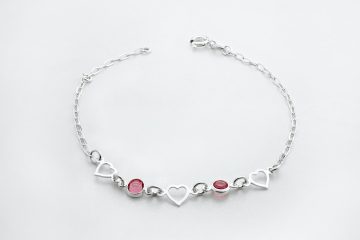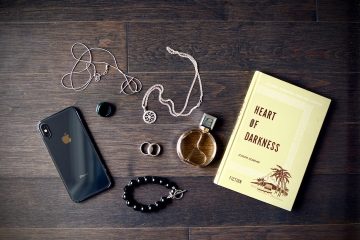*From ancient civilizations to modern fashion runways, bracelets have remained a timeless accessory, adorning wrists with elegance and charm. But what came before the bracelets we know today? Let’s embark on a captivating journey through time and style to uncover the fascinating origins and evolution of these exquisite adornments.*
Introduction: A Glimpse into the Wrist Adornments of Ancient Civilizations
In the vast tapestry of human history, the art of adorning oneself with jewelry has always held a significant place. From ancient Egypt to Mesopotamia, from Greece to Rome, civilizations have expressed their creativity and style through various forms of jewelry. Among these artistic pieces, wrist adornments have played a particularly captivating role.
The journey of bracelets begins long before their modern manifestations. It takes us back to ancient times when people sought to embellish their wrists with unique and meaningful accessories. Let us dive deep into the annals of history and unravel the story of these remarkable adornments.
Ancestral Origins: The First Bracelet-like Adornments
In our exploration of the origins of bracelets, we must venture into the distant past. The earliest traces of wrist adornments can be found in the Paleolithic period, around 40,000 years ago. These early bracelets were crafted from natural materials such as bones, shells, and stones. With rudimentary tools, ancient artisans transformed these raw elements into beautiful, yet simple, wrist decorations.
These ancestral bracelets were more than just decorative items. They possessed symbolic significance, often representing social status, tribal affiliations, or spiritual beliefs. The use of natural materials also connected these adornments with nature, highlighting the deep connection early humans felt with the world around them.
From Egypt to Mesopotamia: The Birth of Ornate Bracelets
As civilizations advanced, so did the art of jewelry-making. The ancient Egyptians, renowned for their opulent and grandiose lifestyle, elevated bracelets to a whole new level. Gold, silver, and precious gemstones adorned their wrists, reflecting their status and wealth. The Egyptians also attributed magical properties to these bracelets, believing they offered protection and brought good fortune.
Meanwhile, in the cradle of civilization, Mesopotamia, bracelets took on a different form. Women favored intricately crafted bangles made of bronze or copper. These bangles often featured delicate engravings and were worn in multiples, creating a harmonious jingle as the wearer moved.
The Alluring Influence of Greek and Roman Bracelets
In the classical era, the Greeks and Romans left an indelible mark on the world of bracelets. The Greeks, with their reverence for beauty and artistry, crafted bracelets that showcased their exceptional skill. Gold and silver bracelets adorned with intricate filigree work and precious gemstones became highly coveted possessions. These bracelets not only enhanced the wearer’s beauty but also served as a testament to their social status.
The Romans, known for their love of luxury, took inspiration from the Greeks and added their own touch to bracelet designs. They introduced the use of cameos and intaglios, carved gemstones that depicted intricate scenes and portraits. These bracelets were worn by both men and women and often served as tokens of affection or symbols of power.
The Middle Ages and Renaissance: Bracelets Take a Backseat
With the advent of the Middle Ages, bracelets became less prominent as a fashion accessory. The focus shifted to more elaborate headdresses, brooches, and rings. However, this does not imply that bracelets disappeared entirely. They still found a place in medieval jewelry, but their designs were more subdued and often incorporated religious motifs.
It was during the Renaissance period that bracelets regained their popularity. The rediscovery of ancient Greek and Roman art sparked a renewed interest in classical designs. Bracelets made a comeback, featuring delicate chains, pearls, and gemstones. These pieces were often worn in multiples, creating a cascading effect that accentuated the gracefulness of the wearer’s hands.
The Victorian Era: Sentimental Bracelets Steeped in Symbolism
The Victorian era was characterized by its sentimental jewelry, and bracelets were no exception. Queen Victoria herself set the trend for mourning jewelry after the passing of her beloved husband, Prince Albert. Black jet or onyx bracelets were worn to signify mourning, often intricately carved with delicate motifs.
Beyond mourning, Victorian bracelets were also rich in symbolism. Charm bracelets, for example, became popular, with each charm representing a significant event or person in the wearer’s life. Lockets were attached to bracelets, holding precious mementos or photographs, adding a personal touch to these cherished pieces.
The Roaring Twenties: Art Deco and Jazz Age Glamor
The 1920s witnessed a seismic shift in fashion and aesthetics, and bracelets embraced the spirit of the era. The Art Deco movement brought forth geometric shapes, vibrant colors, and a sense of modernity. Bracelets featured bold, angular designs, often adorned with diamonds, sapphires, and emeralds. They perfectly complemented the glamorous flapper dresses and exuded the energy of the Jazz Age.
The Modern Era: A Kaleidoscope of Styles
In the contemporary world, bracelets have evolved to cater to diverse tastes and styles. From delicate chain bracelets adorned with minimalist charms to bold statement cuffs encrusted with diamonds, the options are endless. High-end fashion houses and independent designers alike offer an array of bracelets, ensuring there is something for everyone.
Moreover, bracelets have also become a medium for self-expression and storytelling. Engraved bracelets with meaningful quotes or personalized messages have gained popularity, allowing individuals to carry special sentiments with them at all times. Bracelets have transformed from mere accessories into reflections of one’s personality and identity.
Conclusion
The journey through time and style has unraveled the captivating story of bracelets, from their humble beginnings as simple wrist adornments to their current status as fashion statements. From ancient civilizations to the modern era, bracelets have remained a perennial symbol of elegance and style.
Today, as we adorn our wrists with these exquisite pieces, we carry with us a connection to the past and an appreciation for the artistry and craftsmanship that has shaped the evolution of bracelets. Let us celebrate the timeless beauty of these adornments and continue to cherish the elegance they bring to our lives.
FAQs
1. Are there any specific materials that were commonly used in ancient bracelets?
Yes, ancient bracelets were often crafted from natural materials such as bones, shells, and stones. These materials were readily available to ancient artisans and were transformed into beautiful wrist adornments using rudimentary tools.
2. Did bracelets serve any specific purpose in ancient civilizations?
Bracelets held various meanings and purposes in ancient civilizations. They often represented social status, tribal affiliations, or spiritual beliefs. In some cases, bracelets were believed to possess magical properties, offering protection and bringing good fortune to the wearer.
3. How did bracelets evolve during the Renaissance period?
During the Renaissance period, bracelets made a comeback with designs inspired by ancient Greek and Roman art. Delicate chains, pearls, and gemstones adorned the wrists, often worn in multiples to create a cascading effect.
4. What were the popular bracelet styles of the Victorian era?
The Victorian era saw the rise of sentimental jewelry, and bracelets played a significant role. Mourning bracelets made of black jet or onyx were popular, along with charm bracelets that held symbolic charms representing important events or people in the wearer’s life.
5. How have bracelets transformed in the modern era?
In the modern era, bracelets have become a medium for self-expression and storytelling. From delicate chain bracelets with minimalist charms to bold statement cuffs encrusted with diamonds, the options are limitless. Personalized bracelets with engraved messages have also gained popularity, allowing individuals to carry special sentiments with them.



